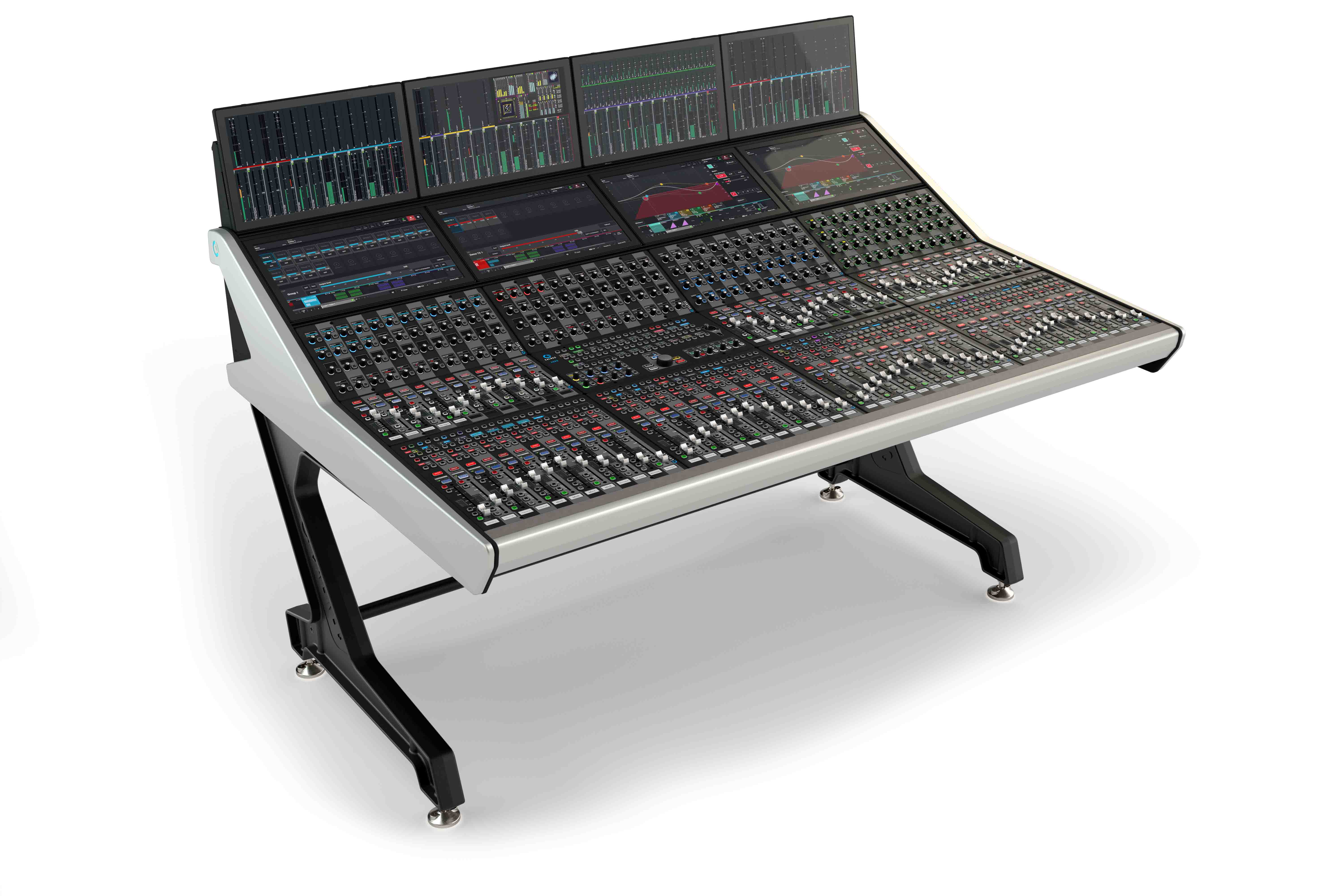Calrec Launches New Argo IP Audio Mixing System
Calrec’s Argo is a new approach to audio mixing, with a flexible control philosophy that blends processing and control

HEBDEN BRIDGE, U.K.—Calrec Audio has unveiled a new audio mixing system, Argo, that offers a new approach to audio mixing and is designed to keep pace with the changes broadcasters are experiencing in their production workflows.
"Broadcasters are under greater pressure to create more content cost-effectively as they are all competing for the same viewers in an increasingly congested market,” says Calrec’s vice president of sales Dave Letson. “At the same time, production workflows have to be more flexible to be more efficient, cover more content and work as part of distributed production models. Broadcasters’ move to IP based networks is encouraging more remote working in more fragmented workflows; we’ve designed Argo to work within each and every one of these new paradigms.
Argo is fully modular with interchangeable hardware panels and uses Calrec’s time-served Assist UI at its core. This means that whether users are working on physical hardware panels or on a remote GUI, the user interface is both familiar and easy to drive.
It’s modular panel system encourages broadcasters to adapt surface hardware to meet their unique requirements, with two mid-level rows of interchangeable panels on the larger Argo Q model, and one mid-level row on the compact Argo S model. Calrec has also introduced a comprehensive system of user templates to instantly change the hardware user interface to meet changing requirements or user preferences, the company said.
Argo is built around an expanded version of Calrec’s popular ImPulse IP core. ImPulse can also be located anywhere; the location of the control surface is not tied to the processing core. It can power up to four independent mix environments, including headless mixers accessed on the public internet, with each mixer able to access more than 2,350 processing paths on a single console; this provides enough power to deal with the biggest immersive and NGA mixing demands, the company said.
Argo’s physical control surface is also more streamlined, using optically bonded touchscreens to provide unrivaled visual feedback and speed of access. Soft panels provide a richer user experience and hardware panels allow users to build definable functions and apply these as templates - this helps operators move around the surface faster and makes it more intuitive, Calrec reported.
Argo’s panels are also interchangeable and can be placed wherever they are needed. This makes it easy to grow and adapt the console to individual requirements and it means the desk can easily be split for sub mixing or mixing in other locations.
Like all Calrec consoles, Argo builds on Calrec’s broadcast-specific and industry-leading surface redundancy. All control elements can be duplicated so an operator can use any panel to access inputs and controls, while fader scrolling functionality adds more protection. When combined with redundant hardware as standard, Argo provides SMTPE’s hitless packet merging alongside a second layer of hardware redundancy to guarantee broadcast uptime.
Argo includes optional AoIP IO modules which can be fitted directly into the control surface, with a variety of I/O options. These can be fitted into every section of the console to give the operator a variety of input options, make cabling more efficient and save space in external racking.
With NGA content on the increase and broadcasters adding value to productions with increasingly complex NGA output formats, Argo provides tools to make everything simpler to organize and manage. Flexible immersive spill helps maintain total control over multi-channel formats but with no need for dedicated surface real estate. Multi-channel sources can be controlled on a single fader but spilled out onto more faders for fine control; Argo allows spill faders can be placed anywhere on the control surface, on any layer and in any position to free up space and make the workspace more adaptable to individual needs.
“Argo is a testament to Calrec’s ability to innovate with the changing times and carve a path through the industry’s changing broadcast workflows," added Letson. "The result is an audio console that provides an unmatched feature set that meets broadcasters’ needs now and well into the future,”
New operational features include: Key Inputs and Ducker; full EQ and Dynamics on Auxes and Tracks; Flexible Spill; User configurable colours for faders; Control Links; Inserts on Auxes; Variable slopes on EQ shelves and filters; Flexible panel layouts (Wilds). Argo has an increased DSP engine which provides 2496 channels on a single console, and physical flexibility up to eight sections to provide up to 96 faders. Multiple sections can be combined or geographically diverse, while the enhanced ImPulse core provides enough horsepower to drive up to four Argo mix environments on one IP core.
Get the TV Tech Newsletter
The professional video industry's #1 source for news, trends and product and tech information. Sign up below.
George Winslow is the senior content producer for TV Tech. He has written about the television, media and technology industries for nearly 30 years for such publications as Broadcasting & Cable, Multichannel News and TV Tech. Over the years, he has edited a number of magazines, including Multichannel News International and World Screen, and moderated panels at such major industry events as NAB and MIP TV. He has published two books and dozens of encyclopedia articles on such subjects as the media, New York City history and economics.

